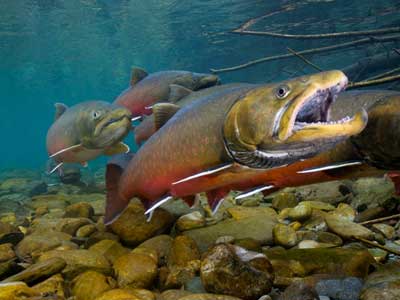The bull trout (Salvelinus confluentus) is one of western North America’s most iconic fish species. Bull trout require cold, clean water and are extremely sensitive to habitat loss or degradation.
Male bull trout, like other char, develop bright orange and white lower fins during the spawning season. Males also develop a hooked lower jaw (kype) that fits neatly into a notch on the end of the nose.
In order to complete their annual spawning migrations, bull trout require complex environments including rivers, lakes, and ocean habitats that connect to headwater streams.
During their migrations, bull trout travel up to 150 miles upstream to reach natal habitat. Unlike salmon, bull trout do not die after spawning. Adults usually spawn multiple times throughout their lifespan.
Bull trout are threatened by habitat degradation and fragmentation, fish passage obstacles, poor water quality, climate change, intentional eradication, and competition from non-native species.
The historical range of bull trout included the Columbia River Basin and parts of Washington, Oregon, British Columbia and Alberta. In 1998, bull trout were listed as a threatened species under the Endangered Species Act.
Related Information
